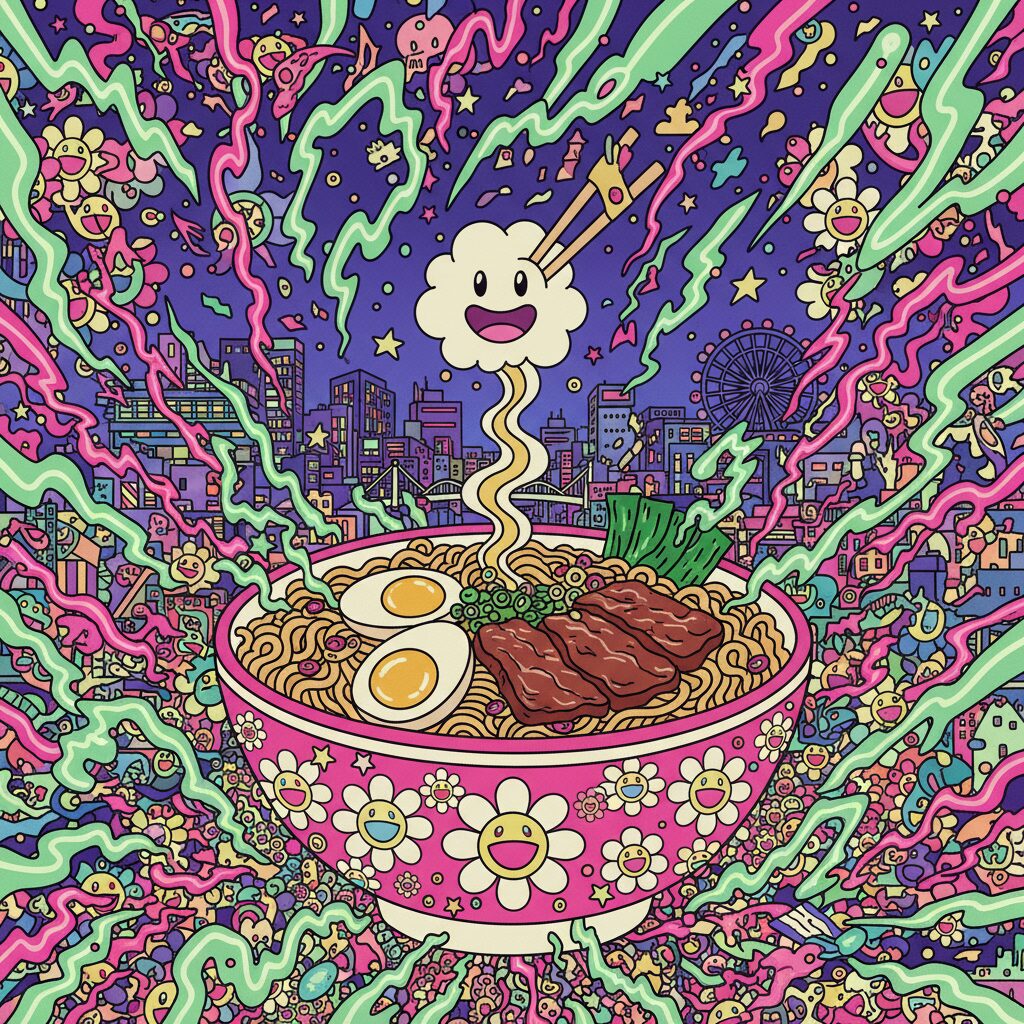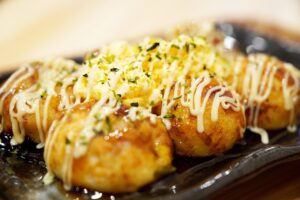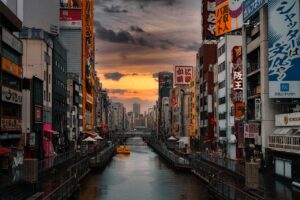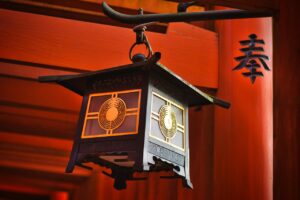Osaka beats with a rhythm all its own, a city that dances to the sizzle of takoyaki on a grill and the roar of a thousand conversations echoing under a canopy of neon. At the very center of this vibrant metropolis lies Namba, a district that isn’t just a place on a map but an experience, a sensory explosion that defines the spirit of Osaka. It’s a labyrinth of shopping arcades, glowing billboards that paint the night sky, and hidden alleyways whispering tales of old. For any traveler, Namba is the essential starting point, a thrilling immersion into the city’s soul. But for the Muslim traveler, the question that hums beneath the excitement is a familiar one: amidst this dazzling chaos, where can one find a taste of Osaka that is pure, delicious, and Halal? The search for Halal food in a foreign land is a journey within a journey, a quest that connects you more deeply to a city’s heart. It transforms you from a mere tourist into a true explorer, seeking out the places where cultures meet and new traditions are born. In Osaka, and specifically in Namba, that journey is not one of scarcity but of delightful discovery. This city, famous for its creed of ‘kuidaore’—to eat oneself into ruin—has opened its arms wide, creating a culinary landscape where everyone is welcome at the table. From steaming bowls of ramen to luxurious cuts of world-famous beef, the Halal scene around Namba is blossoming, turning this electric neighborhood into a sanctuary for food lovers of every background. This guide is your compass, your key to unlocking the incredible Halal flavors waiting for you just steps away from the bustling platforms of Namba Station.
For a truly immersive culinary experience, be sure to explore the vibrant Kuromon Ichiba market, a feast for the senses just a short distance from the neon heart of Namba.
The Electric Pulse of Namba: A Gateway to Flavor

To truly grasp Namba, you first need to recognize its role as Osaka’s grand central hub. It’s not merely a single station but a vast, interconnected network of terminals—Nankai Namba, the entry point from Kansai International Airport; JR Namba; and the subway lines weaving beneath the city. Stepping out from any of its exits feels like entering an entirely different realm. The air pulses with energy. Crowds move with intention, a flowing river of humanity threading through concrete and light. To your left, the covered Shinsaibashi-suji Shopping Arcade unfolds like an endless treasure trove. To your right, the famous Dotonbori canal mirrors a world of giant, playful advertisements—a massive crab with moving claws, an octopus chef, and the legendary Glico Running Man, eternally captured mid-run. This is not a place for quiet reflection; it’s a place to get swept up in the beautiful, overwhelming chaos of urban Japan.
The vibe here is distinctly Osakan. It’s louder, brighter, and perhaps more candid than what you’d expect in Tokyo. People laugh openly, shopkeepers call out with lively enthusiasm, and the aroma of street food fills the air with mouthwatering promise. This very atmosphere, this celebration of life through food and commerce, makes the search for Halal dining all the more rewarding. Discovering a Halal-certified restaurant here feels like stumbling upon a secret garden amid a bustling carnival. It’s a moment of calm, of reassurance, a reminder that the city’s renowned hospitality embraces you as well. Navigating Namba takes a bit of adventurous spirit. The station complex can be confusing for newcomers, but that’s part of the excitement. The trick is to seek out major landmarks: the towering Namba Parks with its stepped gardens, the classic front of the Takashimaya department store, or the iconic Dotonbori bridge. These serve as your anchors in Namba’s swirling tide.
Unlocking Osaka’s Signature Dishes: The Matsuri Experience
One of the greatest pleasures of traveling in Osaka is savoring its renowned street food. For Halal-conscious travelers, the idea of missing out on iconic dishes like takoyaki (savory octopus balls) and okonomiyaki (a hearty savory pancake) can be discouraging. However, just a short, pleasant walk from the main Namba hub, a beacon of hope and flavor awaits: Matsuri. The name itself means “festival,” and stepping inside feels just like that—a celebration of food, culture, and inclusivity.
Finding Your Way to the Festival
From the bustling Dotonbori main street, you’ll turn into a slightly quieter side road, leaving the busiest crowds behind. The walk itself offers a charming shift in scenery. You’ll pass smaller shops and local homes, catching a glimpse of the neighborhood’s more personal side. Matsuri is not a large or flashy establishment; rather, it’s a cozy, inviting space, often with a line of eager diners outside—a testament to its popularity with both locals and tourists. Its sign, proudly displaying Halal certification, is a comforting sight for any Muslim traveler.
The Sights, Sounds, and Tastes of Matsuri
Inside, the atmosphere is warm and lively. You can often sit at a counter with a front-row view of the culinary action. Watching the chefs at work is captivating. They pour the batter into special takoyaki molds, expertly flipping the balls with swift, precise movements until they turn perfectly golden and crisp outside, with a delightfully soft and gooey center. The same attention goes into preparing okonomiyaki on a large teppan grill. The sizzle of batter hitting the hot surface and the aroma of cabbage, meat, and savory toppings fills the air—an experience that delights all the senses.
What makes Matsuri truly special is its dedication to authenticity without compromise. Their recipes are carefully adapted to be fully Halal, using ingredients like Halal-certified chicken and beef, along with sauces free of alcohol. The flavor is exquisite. The takoyaki is topped with a rich, sweet-savory sauce, a swirl of Japanese mayonnaise, and a generous sprinkling of bonito flakes that dance in the heat. Each bite bursts with flavor and texture. The okonomiyaki is a comforting, soul-warming dish, packed with fresh ingredients and grilled to perfection. Beyond these favorites, the menu often includes other beloved Japanese dishes like ramen and karaage (fried chicken), all prepared according to Halal standards. Some tables even offer a do-it-yourself takoyaki experience, making it an engaging and memorable meal, especially for families or groups of friends.
Matsuri also caters thoughtfully to its Muslim guests beyond the food. The restaurant features a dedicated prayer space with wudu facilities. This considerate addition transforms it from just a dining spot into a true sanctuary, allowing guests to comfortably perform their prayers before or after eating. It embodies the spirit of Japanese omotenashi, or wholehearted hospitality, tailored for the global Muslim community.
The Soulful Slurp: Halal Ramen at Naritaya Osaka Minami

Ramen is more than just a noodle soup in Japan; it stands as a cultural institution, a dish that sparks devotion and endless debates over the ideal broth, noodle, and topping combination. For many travelers, tasting an authentic bowl of ramen is an essential part of their itinerary. Traditionally, this has posed a challenge, as ramen broth is almost always prepared with pork. This is where Naritaya Osaka Minami comes in—a haven for ramen enthusiasts seeking a genuinely authentic, completely Halal experience.
A Journey into Ramen Heaven
Located in the lively, slightly edgy Amerikamura (American Village) neighborhood, just a short walk from the main Shinsaibashi area, Naritaya feels like a rare find. The route from Namba Station is an engaging stroll. You’ll pass through the Shinsaibashi-suji arcade, with its endless array of shops, before entering the youthful, fashion-forward streets of Amerikamura, known for its vintage stores, quirky cafes, and street art. The change in atmosphere is striking, and discovering this unpretentious ramen shop amid the trendy bustle truly feels like a local secret.
Naritaya is a traditional, no-frills ramen-ya. Ordering is typically done via a ticket machine at the entrance—a quintessentially Japanese ritual. You select your ramen, add any extra toppings, pay, then hand the ticket to the chef. Seating is cozy, mostly counter spots that place you right in front of the kitchen’s activity. The steam, the clatter of utensils, and the focused energy of the chefs all contribute to the authentic ramen experience.
Deconstructing the Perfect Bowl
The highlight at Naritaya is the Mazesoba, a “soupless” ramen featuring thick, chewy noodles coated in a rich, savory sauce, minced chicken, a perfectly soft-boiled egg, and a variety of fresh toppings like green onions and nori seaweed. Before eating, you break the egg yolk and mix everything together, creating a luscious, creamy coating on every noodle. The flavor is deep, complex, and immensely satisfying. For those who prefer a more classic soup-based ramen, their chicken broth is exceptional. Light yet deeply flavorful, it’s simmered for hours to draw out every bit of umami. Topped with tender slices of chicken char siu, bamboo shoots, and a sheet of nori, it offers a warm, comforting embrace in a bowl.
The noodles themselves warrant special praise. Made in-house, they guarantee freshness and the perfect chewy texture that stands up to the rich broth. The care invested in every element is clear. Knowing that every ingredient—from the soy sauce to the chicken—is carefully sourced to be Halal adds peace of mind to the experience. Like Matsuri, Naritaya also offers a prayer room, making it a thoughtful and convenient option for Muslim diners exploring Amerikamura without needing to rush back to their hotel for prayer. This small shop with a big heart is devoted to the simple yet profound mission of making delicious, authentic ramen accessible to everyone.
A Spice-Laden Oasis: Ali’s Kitchen and the Flavors of Pakistan
While exploring the subtleties of Japanese cuisine is essential, sometimes the palate longs for a different kind of warmth and a distinct blend of spices. Osaka’s multicultural environment ensures you’re never far from an authentic taste of another part of the world. For those in search of the rich, aromatic flavors of South Asia, Ali’s Kitchen is a renowned institution. This is more than just a restaurant; it’s a gateway to Pakistani flavors, run by the charismatic and hospitable Ali, who is a cherished member of Osaka’s international community.
From Namba to Lahore
Just a short walk from the heart of Namba, discovering Ali’s Kitchen feels like passing through a portal. One moment you’re immersed in the sleek, modern vibe of Japan, and the next you’re surrounded by the warm, fragrant atmosphere of a traditional Pakistani eatery. The decor is vibrant, adorned with cultural artifacts and textiles that tell a story, while the air is dense with the aroma of cardamom, cumin, and sizzling garlic. The restaurant is often bustling, attracting a diverse mix of Japanese locals, expats, and tourists, all drawn by the promise of authentic, carefully prepared food.
A Feast for the Senses
The menu at Ali’s Kitchen offers a journey through the finest Pakistani cuisine, and everything is Halal. The biryani is a must-have: a fragrant blend of long-grain basmati rice, tender meat (chicken or mutton), and a harmonious mix of spices, slow-cooked to perfection. Every bite reveals layers of complex flavors that unfold on the tongue. The curries are equally outstanding, ranging from rich, creamy kormas to bold, flavorful karahis served sizzling in traditional wok-like pans. And naturally, no meal is complete without bread. The naan, freshly baked in a tandoor oven, arrives at your table puffed, hot, and irresistibly soft—the ideal companion for scooping up every last drop of delicious curry.
What distinguishes Ali’s Kitchen is its steadfast dedication to authenticity. The spices are imported, the recipes remain traditional, and the passion is evident. Ali himself often moves through the dining room, welcoming guests with a warm smile and ensuring everyone feels at home. This personal touch transforms the dining experience from a simple meal into a genuine cultural exchange. For travelers experiencing palate fatigue from Japanese flavors, or for those simply yearning for a taste of home, Ali’s Kitchen offers a restorative and deeply satisfying experience. It stands as a beautiful testament to Osaka’s culinary diversity and its inclusive spirit.
Beyond the Plate: Weaving a Culinary Tour Through Namba’s Neighborhoods

A Halal meal in Namba offers more than just a place to eat; it serves as an ideal starting point for a day of discovery. The area’s compactness and walkability allow you to effortlessly combine fantastic dining with iconic sightseeing, crafting a truly immersive Osaka experience. Let’s envision a day centered around these culinary treasures.
Morning at Kuromon Market, Lunch with a Sizzle
Begin your day not far from Namba at the Kuromon Ichiba Market, affectionately known as “Osaka’s Kitchen.” Although many items here may not be Halal, the market is a cultural must-see. The bustling covered arcade hums with energy as vendors offer a stunning variety of fresh seafood, colorful produce, and local specialties. It’s a visual feast and a wonderful spot to observe everyday life. Take in the atmosphere, watch chefs grill scallops and giant prawns, but save your hunger for later. When lunchtime arrives, head to Matsuri. After a morning of sensory immersion at the market, enjoying a Halal-certified okonomiyaki made just for you feels especially satisfying. It links you to the vibrant market culture you’ve just experienced, while ensuring inclusivity and safety.
Afternoon in Amerikamura and a Ramen Ritual
Following your fulfilling lunch, shift gears by strolling over to Amerikamura, the heart of Osaka’s youth culture. Spend your afternoon exploring unique fashion boutiques, hunting for gems in vintage shops, and indulging in people-watching. The street style here is daring and expressive, offering a striking contrast to Japan’s more traditional scenes. As the afternoon fades and hunger returns, it’s an ideal moment to visit Naritaya. A warm, comforting bowl of Halal ramen is perfect to recharge after an afternoon of walking and shopping. This casual, quick, and deeply satisfying meal matches the relaxed, trendy energy of Amerikamura perfectly.
An Evening Under the Neon Lights of Dotonbori
When dusk falls, all paths in Namba lead to one destination: Dotonbori. This is when the district truly awakens. Towering neon signs and digital billboards light up, their reflections shimmering in the canal in a dazzling, kaleidoscopic spectacle. This is the Osaka you’ve seen in photos, even more stunning in person. Stroll along the water, snap a picture by the Glico Running Man, and soak up the electric ambiance. For dinner, you might opt for the spicy, fragrant dishes at Ali’s Kitchen for a change of flavor, or perhaps you’ve reserved a table for a special occasion—savoring Halal Kobe beef at one of the certified nearby restaurants. A luxurious meal followed by a leisurely walk through Dotonbori’s glittering core makes for an unforgettable Osaka night.
For a quiet moment amid the bustle, visit Hozenji Yokocho. This narrow, stone-paved alley lined with traditional lanterns and small eateries offers a glimpse into the past. At its center is Hozenji Temple, home to a moss-covered statue of the deity Fudo Myo-o. Worshippers pour water over the statue as part of their prayers, a beautiful, peaceful ritual just steps away from the neon glow.
Practical Tips for the Savvy Traveler
Exploring Namba and its food scene is an exciting experience, and a few handy tips can help make your visit even more enjoyable.
Know Your Stations
As noted, Namba consists of multiple stations. Before heading out, identify which station is nearest to your destination. The Nankai Namba station is ideal for reaching Takashimaya and Namba Parks. The subway stations (Midosuji, Yotsubashi, and Sennichimae lines) are convenient for accessing Shinsaibashi and Dotonbori. Familiarize yourself with the main exits to avoid confusion in the extensive underground network.
Cash is Still King
Although Japan is becoming more credit card-friendly, many small eateries, especially ramen shops and street food stalls, still prefer cash. It’s wise to carry a decent amount of yen. Many casual restaurants, like Naritaya, use ticket vending machines as part of their ordering system.
Look for Certification
When searching for Halal options, check for official certification logos displayed at the restaurant’s entrance or on their menu. Recognized organizations, such as the Japan Halal Foundation, provide these certifications. Numerous restaurants also offer detailed information on their websites, which is helpful for planning meals ahead of time.
A Note on Safety
Namba is a very safe area, even after dark. The main concern is simply the large crowds. In busy spots like Dotonbori or the Shinsaibashi arcade, it’s wise to stay aware of your belongings. Keep your bag zipped and in front of you. As a solo female traveler, I’ve always felt secure in Namba, though it’s always best to remain vigilant. The bustling crowds add to the atmosphere, and navigating them with some caution ensures a stress-free experience.
An Invitation to Osaka’s Table

Namba is the vibrant, roaring, and unapologetic heart of Osaka—a place brimming with boundless energy and endless discoveries. For Muslim travelers, it offers a surprisingly warm and delightful welcome. The growth of the Halal food scene here is not merely a trend; it reflects Osaka’s naturally open and hospitable spirit. This city has always embraced food as a universal language, a means to unite people, share happiness, and create lasting memories. Searching for Halal food amidst the electric maze of Namba is not a limitation but an enrichment, guiding you through intriguing side streets, introducing you to passionate chefs, and connecting you to the city on a deeper, more personal level. So arrive with an open heart and an empty stomach. Let the neon lights lead the way, and let Osaka’s incredible flavors tell their story. Here, at the very center of it all, a seat at the table awaits you.








